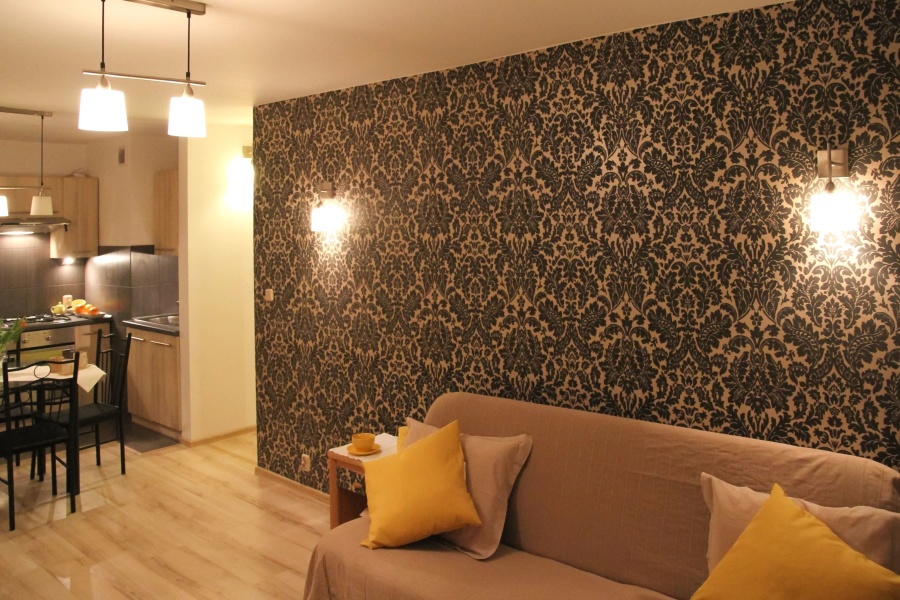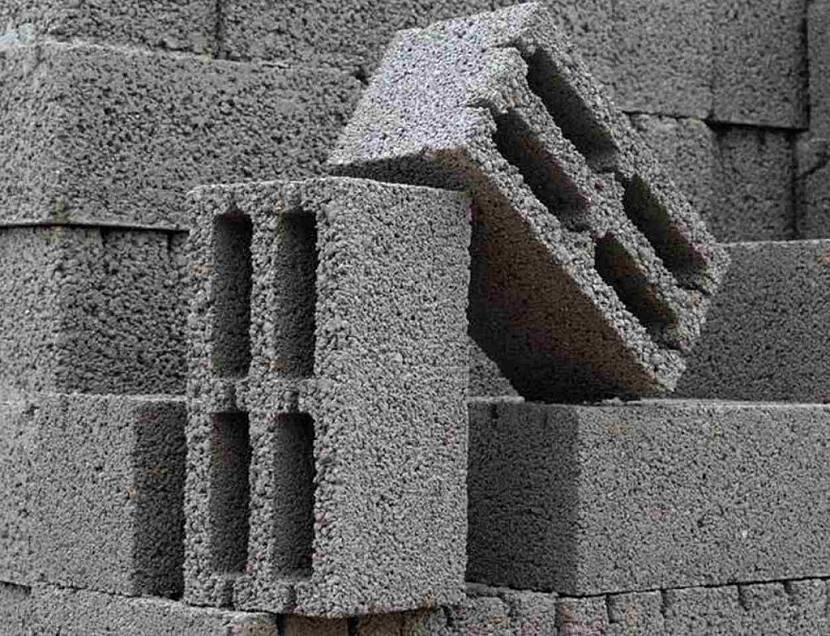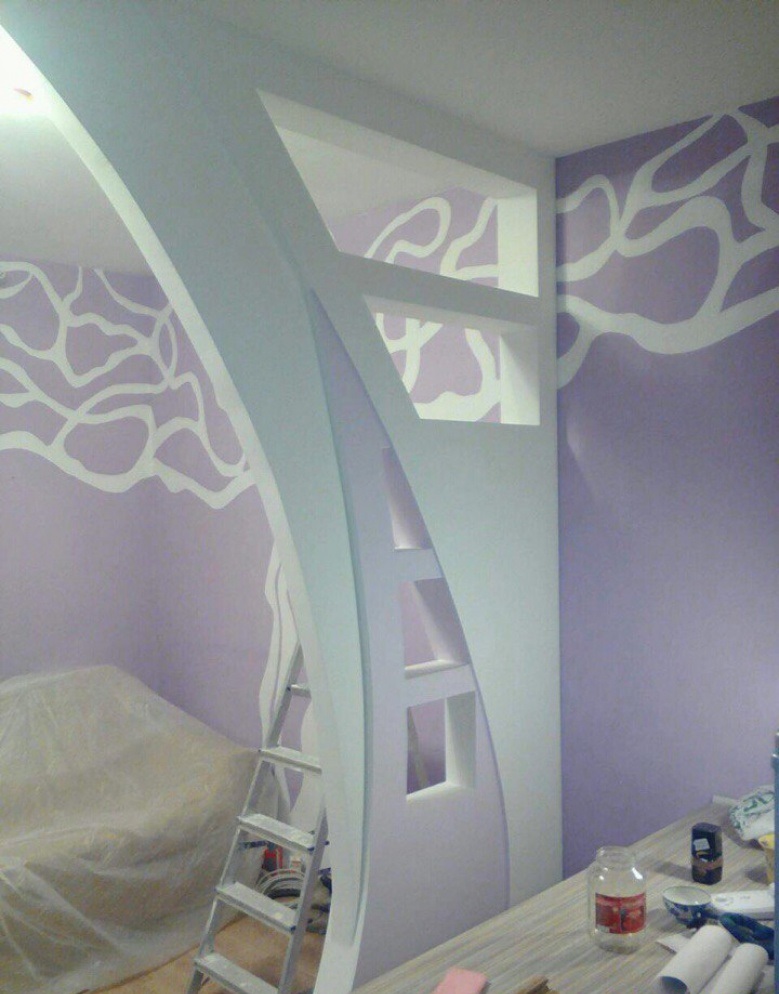Not always one big room is good. For some, it is better to have two small ones, but everything will be divided: there is a room, here is a hall, here is a utility room, etc. To do this, you need to order a construction team and choose a good building material. Most often, most of them have a number of problems with the latter, since the modern market offers dozens of different products. Some companies claim that this one is good, while others do not agree, promoting their product.
The editors of the site "bestx.htgetrid.com/en/" have prepared for you a rating of the best materials for partitions in an apartment for 2020.

Content
What materials are used more often?
As soon as a person decides to start a global renovation and divide the apartment in a new way, he chooses durable materials that can not only give the room a new look, but also withstand heavy or medium objects. The presence of sound insulation will be useful. Stores and hypermarkets offer dozens of materials that are perfect for solving tasks:
- concrete blocks;
- bricks;
- clinker, which has recently become in great demand;
- concrete walls;
- drywall is a cheap but practical option;
- silicate blocks;
- expanded clay products that are well suited for sound absorption;
- blocks made of lightweight concrete.
These are the most common materials found in any store at an affordable price. Each of them has both a number of advantages and disadvantages, which are important to consider when choosing. This will save money and make your apartment better.
Rating of the best partitions
Clinker and ordinary (hollow) bricks

A popular building material that is most often used to create partitions. Technical characteristics allow it to be used in any apartment. Sold at a price: from 80 rubles per piece. Popular manufacturers:
- RECKE BRICKEREI.
- LSR-RAUF facing brick plant.
- Golitsynsky Brick Factory.
Advantages:
- provides good sound insulation;
- strength - at the level;
- such walls can withstand the installation of heavy objects and do not deteriorate over time, which is a big plus for people who prefer to install a TV and bookshelves (the only thing that is important to know is that hollow bricks need additional fastening);
- high resistance to mechanical damage (they cannot be broken just like that, only with a sledgehammer or special devices).
Disadvantages:
- such walls, due to their weight, increase the load on the floor several times, so they cannot be used in every apartment;
- for construction, hundreds of bricks will be needed, the size of which is 25x12x6.5 cm, because for 1 sq. m. 60 pieces will take (together with this the solution is added up, which is a rather expensive solution that is not suitable for every user);
- this material has large deviations, and also there are uneven surfaces on it, which do not create the best impression, which entails additional costs in the form of plaster (the layer thickness should be 1 or 1.5 cm, so that the structure may not pay off).
Placing brick partitions will require a reinforced floor that is well designed. It must be mounted on beams that are made only of reinforced concrete and rest on load-bearing walls. Therefore, in order to create such a partition, it is necessary to consult with many specialists who would approve of this decision, or, conversely, point out flaws in the project.
Of course, the weight can be reduced by using a hollow brick. Thanks to him, the mass of the partition will decrease by 20-30%. It is important to understand that such a wall has low sound insulation values, which will allow you to hear almost every movement in the room, and this is not always good.
You can speed up the putty process. To do this, a person needs to finish with plasterboard panels. This material does not need additional processing. All that is done is putty is applied and wallpapering begins.
Ceramic brick

This option is suitable for people who want to create maximum comfort at a low cost. Its thickness is 11.5 cm. Average price: from 25 rubles. Manufacturers:
- Norsk Ceramic Factory.
- Vladimir brick factory.
- Slavic brick.
Advantages:
- low cost compared to previous materials;
- walls are erected many times faster, since the brick is large in size, and laying does not take much time;
- economical consumption of the solution, which is very important during construction;
- the material has good sound insulation, as well as excellent acoustic parameters indoors (does not create an echo);
- when using special pins, a person can hang even the heaviest items without any problems.
Disadvantages:
- cheap products have a deformed body, which creates problems when laying;
- some bricks, more often made of low-quality raw materials, accumulate moisture, which eventually destroys their integrity;
- bricks are susceptible to chemical attack.
Finishing is done in one of two ways:
- Plaster. The thickness is the same as for conventional and clinker bricks.
- Drywall. Here the choice depends on the owner.
Glass blocks

This is rather a rarity than a frequent practice, but at times some people want to add ambiance to their home and make walls from glass blocks. Yes, it gives a unique style and serves as a great replacement for fragile drywall.
This option is suitable for spacious apartments, therefore, it will separate the kitchen from the living room with maximum aesthetics. Sold at the price of clinker bricks. The average price is 225 rubles apiece. Produced by companies:
- Vetroarredo.
- HEBEI.
- CIECH Vitrosilicon.
- VitraBlok.
Advantages:
- to break such a wall you will need a solid object;
- because of the inner vacuum layer, glass blocks provide high-quality sound insulation;
- decorative effect - with the help of this material any bold idea is realized;
- transmits light well (artificial lighting is good, but the room looks much better with natural light);
- good moisture resistance;
- do not require special care;
- do not ignite and withstand maximum temperatures;
- do not accumulate unpleasant or toxic odors.
Disadvantages:
- it is impossible to hang anything, as nailing and drilling must be done by professionals.
Aerated concrete blocks

Good material that is trusted by thousands of buyers. Sold at a price of 125 rubles. Manufacturers:
- AEROC.
- XELLA.
- UDK.
- "STONE LIGHT".
Advantages:
- any surface can be formed, since the material can be processed;
- it will take 5 minutes to drill the grooves for the electrical wiring;
- if any defect or chip occurs during operation, its correction will not take a lot of money;
- due to the large dimensions (60x20x11.5 cm), the walls are constructed many times faster than the brick ones;
- low material consumption, which significantly saves costs;
- Due to the fact that the concrete blocks are made with a slight deviation, a small layer of plaster is required for facing, usually 80 millimeters.
Disadvantages:
- poor sound insulation, when compared with brick products, so it can only be used in certain rooms, for example, in a utility room;
- not suitable for placing heavy objects, since the product has little strength;
- aerated concrete blocks are not highly resistant to mechanical damage, so any blow with a heavy object guarantees a chip.
Soundproofing problem is being solved. To do this, it is enough to apply a thicker layer of special plaster (1.5 cm), which will allow you to absorb more waves or use drywall, which has an additional layer. Of course, such solutions will increase the final cost, but it will still come out cheaper than clinker bricks.
Expanded clay blocks

An excellent alternative for those who do not want to use outdated aerated concrete materials, but want to improve their home. The average price is 50 rubles per piece. Manufacturers:
- LLC "Rifey".
- Cheboksary Stroykombinat.
- BorStroyLes.
Advantages:
- such an element has the highest strength in comparison with the previous block;
- absorbs sound better than bricks;
- low price;
- easy installation, which makes this product more accessible to most users;
- good resistance to fire;
- the specific gravity is 2.5 times less than that of bricks;
- such blocks do not form fungus, mold and other microorganisms, which makes them safe for humans;
- durability;
- keep warm well.
Disadvantages:
- unpresentable appearance, however, this drawback is solved by finishing.
For laying such blocks, gypsum plaster, lime, clay, etc. are most often used. This makes it possible to choose the most durable material at a low cost.
Silicate blocks

There are two types of such blocks on the market - hollow (they have special grooves, which allows faster wiring) and full. The average cost is 90 rubles apiece. Manufacturing companies:
- "Will bang."
- LLC "GROS".
- Bor silicate plant.
Advantages:
- due to the fact that the block is 8 cm thick, it has good acoustic characteristics, which provides excellent sound insulation and guarantees a person's comfort, since the echo will not be reflected;
- this option is highly durable (to break such material, you will need a weighty object);
- not demanding on a thick layer of plaster, in some situations 50 mm is enough;
- you can hang heavy objects, while the wall will not be damaged either after a year or after 10 years;
- the cost of work and construction is comparable to clay brick, however, unlike it, there is no need for 1.5-centimeter plaster, which has a positive effect on the final amount.
Disadvantages:
- cladding is required, since the material does not have the most attractive appearance;
- high mass.
Plasterboard partitions

Most of the modern partitions are made of gypsum plasterboard because they are low cost and easy to finish. For this reason, there are dozens of different types, even water resistant ones, which are suitable for installation in the bathroom.
It looks like a metal frame, which has a drywall surface on both sides. For insulation, mineral wool is placed between these elements. This wall does not have a high level of sound absorption, since the thickness is 12 cm.
Sold at a price: from 380 rubles. Manufacturers:
- "KNAUF".
- "Giprok".
Advantages:
- average ability to absorb sound;
- environmentally friendly material;
- due to the fact that the material absorbs and releases moisture, it provides the user with a good microclimate, so even in a room without windows there will be a pleasant atmosphere;
- no need to plaster, since the surface is flat (you can only apply putty, glue the wallpaper or apply paint);
- installation will take a minimum of time;
- variability of forms;
- installation can be done by hand with a minimum set of tools and a short guide (this solution allows you to save on builders, but it is applicable for those who are not going to decorate the wall with various inserts);
- light weight;
- low cost;
- good resistance to fire.
Disadvantages:
- it is not recommended to place heavy objects on such a structure, since the wall will not withstand this, however, if a person needs this, then builders can be warned who will install additional fasteners on a metal frame, after which a person can easily place any object (it is important to do this on the moment of work, after all, after their completion, it will be necessary to dismantle in order to put reinforcing elements);
- such walls will not be able to withstand strong blows, therefore, drywall must be treated with care;
- to use this material in the bathroom, it is necessary to have additional insulation, which will prevent intensive absorption of moisture.
The design of plasterboard partitions is capable of various shapes. This allows you to create a unique indoor environment. Such designs make it possible to place an aquarium with fish or a terrarium, shelves, a TV, etc. inside. This will allow you to use the space as practical as possible and give little convenience.
This solution is economical and durable. Installing a drywall wall will take a day, and in some cases, less. If you buy high-quality mineral wool from the best manufacturers during the construction, then the person will receive not only heat, but also excellent sound insulation, which will be comparable to some concrete options, but this option is far from brick indicators.
So which is the best choice?
Despite this diversity, this issue will never be resolved. It is easy to choose the best option, it is enough to calculate the construction budget. Popular options for partitions that are more often used in construction include:
- Ceramic and silicate bricks. The option is intended for standard conditions, when a person has an average budget. These materials will give the owner excellent sound insulation, and the construction will take a minimum of time. When buying high-quality silicate bricks, a person can forget about finishing and not plastering the surface, which makes it possible to significantly save money.
- When the main goal of a person is to achieve the best soundproofing, then solid brick can be considered a suitable option. It is best to make this decision at the design stage so that the floor under the partition can be better reinforced. The fact is that this material has a large mass, so not every apartment will withstand it.
- It is important to understand that despite all the advantages of expanded clay and concrete blocks, you cannot hang massive objects on them, as this will ruin them.
- Clinker bricks and glass blocks are good and look 5+, but the cost of such products is too high, despite the fact that these materials give the owner the best acoustic performance and reliability.
Finally
Creating a partition is not such a difficult task, but this requires a thorough analysis of the layout, because not in all houses you can freely demolish walls and put new ones. To do this, you must invite a review and obtain permission from government agencies. Only then can you make changes to the layout. Failure to comply with this law entails a fine that will cost more than repair work.
If you have experience using the materials described in the rating, or more interesting models, tell us about it in the comments and we will add them to the top.












